Hydroacoustic detection and estimation techniques of squid Sthenoteuthis oualaniensis in the South China Sea
-
摘要:
利用双频(38 kHz、120 kHz)Simrad EK60和频率分别为70 kHz和120 kHz的2部Simrad EY60科学探鱼仪于2013年获得的南海鸢乌贼(Sthenoteuthis oualaniensis)声学调查资料,对鸢乌贼的目标强度(TS)和空间分布、浮游动物的干扰、频差技术的应用等内容进行了分析。结果表明,以灯光罩网取样对鸢乌贼TS进行现场测量是可行途径;自然条件下鸢乌贼声学映像不明显,光诱条件下鸢乌贼开始聚集,22: 00前主要分布于10~50 m和55~80 m水层,22: 00后主要分布于10~35 m、50~75 m和115~155 m水层;浮游动物和深海鱼类是鸢乌贼声学探测的重要干扰,尤其是夜间,设置积分阈要考虑不同时间段的影响;频差技术是鸢乌贼声学映像鉴别的重要方法,应深入研究。
Abstract:According to the acoustic survey data of squid (Sthenoteuthis oualaniensis) in the South China Sea in 2013 obtained by Simrad EK60 (38 kHz, 120 kHz) and Simrad EY60 (70 kHz, 120 kHz) scientific echosounders, we investigated the target strength (TS) and spatial distribution of squid, interference of zooplankton, potential of dB difference technique in the acoustic identification. The results reveal that the TS of squid could be measured by in situ method with light-falling net as biological sampling device. Squid echo was not obvious under natural light condition, but the density of squid increased significantly when the light was on. Before 22: 00, the squids mainly assembled in layers at 10~50 m and 55~80 m, while after 22: 00, the squids assembled in layers at 10~35 m, 50~75 m and 115~155 m. Zooplankton and pelagic fish caused considerable interference in the acoustic estimation especially at night, so different thresholds should be selected during different time periods. The dB difference technique which might be important in discriminating squid echogram should be studied further.
-
鸢乌贼(Sthenoteuthis oualaniensis)隶属枪形目、开眼亚目、柔鱼科、鸢乌贼属,广泛分布于印度洋、太平洋的热带和亚热带海域,其中南海海域数量较大[1-3]。国内外学者对印度洋鸢乌贼的基础生物学、种群特性、资源评估等方面做了大量研究,对南海鸢乌贼的研究主要集中在渔业生物学方面,而资源评估和渔场分布方面的研究报道较少[4-8]。虽然中国大陆对南海鸢乌贼有过调查[9]但并不系统,对南海鸢乌贼的分布格局和开发潜力尚不清楚,需要通过充分调查,了解和掌握南海鸢乌贼的生态习性和资源分布,以为中国南海海洋生态研究和渔业可持续发展提供重要数据。传统调查方法“拖网”无法全面覆盖鸢乌贼的分布水层;而水声学方法具有直观、快捷、取样率大等优点,能够提供丰富的鱼类时空分布信息,可对几乎整个水层进行同步观测,是海洋鱼类资源调查和评估的重要方法[10-13]。通过水声学方法研究海洋头足类资源始于20世纪60年代,之后时有些报道[14-18]。笔者根据近年南海鸢乌贼声学调查资料,对鸢乌贼的目标强度(target strength,TS)的测量、鸢乌贼空间分布、浮游动物的干扰、频差技术的应用等内容进行了分析研究,旨在为南海鸢乌贼的水声学测量和评估提供基础依据。
1. 材料与方法
1.1 声学数据采集与分析
声学数据分别由Simrad EY60和Simrad EK60科学探鱼仪于和2013年6月~7月和采集于南海中南部。鸢乌贼声学调查站位见图 1。Simrad EY602台换能器置于导流罩内,导流罩通过钢架固定于渔船右舷中部且不与船体接触以避免马达振动干扰换能器正常工作,换能器吃水约1.5 m,平均航速6.0 knots。Simrad EK60装载于“南锋”号调查船底部。按照国际通用的标准目标方法进行声学仪器校正[19]。Simrad EY60的校准地点是海南岛东南海域,时间是2013年9月3日。Simrad EK60的校准地点广东万山岛锚地,时间是2013年6月8日。Simrad EY60和Simrad EK60的主要参数见表 1和表 2。
表 1 Simrad EY60探鱼仪主要参数设置Table 1 Setting of main parameters of Simrad EY60 echosounder参数
parameter换能器参数parameter setting of transducer 单位
unit70 kHz 120 kHz 换能器型号transducer type ES70-7C ES120-7C 换能器增益transducer gain 27.00 27.00 dB 发射功率transmitting power 800 500 W 脉冲宽度pulse duration 0.512 0.512 ms 纵向波束宽度alongship 3 dB beam width 7.00 7.00 degree 横向波束宽度athwartship 3 dB beam width 7.00 7.00 degree 吸收系数absorption coefficient 0.018 0.045 dB·m-1 波束等效立体角equivalent beam angle -21.00 -21.00 dB 表 2 Simrad EK60探鱼仪主要参数设置Table 2 Setting of main parameters of Simrad EK60 echosounder参数
parameter换能器参数设置parameter setting of transducer 单位
unit38 kHz 120 kHz 换能器型号transducer type ES38B ES120-7C 换能器增益transducer gain 26.50 27.00 dB 发射功率transmitting power 2000 500 W 吸收系数absorption coefficient 0.0066 0.046 dB·m-1 纵向波束宽度alongship 3 dB beam width 7.08 7.00 degree 横向波束宽度athwartship 3 dB beam width 7.03 7.00 degree 波束等效立体角equivalent beam angle -20.6 -21.0 dB 声学数据的分析借助渔业声学后处理软件Echoview 4.9完成。表 3是鸢乌贼TS研究用单体目标回波信号采集和分析的一些参数。TS计算方法是先将所有单体TS转化为线性值,得到声散射截面(σ),然后对所有σ求平均后,对平均σ取对数得到平均TS[$\text { 平均 } T S=10 \lg \left(\sum_{i=1}^n \frac{\mathsf{σ}_i}{n}\right)$][20]。鸢乌贼TS与胴长(mantle length,ML)的关系通过方程:$TS = {\rm{a}}\lg ML + {\rm{b}}$进行拟合,a和b是待解常数。利用Microsoft Excel 2010和SPSS 16.0进行数据计算和统计分析。所有用于TS测量的声学数据都经过精心挑选和核对。鸢乌贼TS测量的生物学数据来自灯光罩网样品,且只选择鸢乌贼数量百分比占90%以上的站位进行。灯光罩网一般19: 00开灯诱鱼,21: 00开始扣罩所诱集鱼类,每站作业一网,每网次作业时间为40 min左右。选取20: 00~21: 00之间的声学数据进行鸢乌贼回声强度分析,分析水层为10~50 m,分析单格(cell)定义为100 ping×5 m。
表 3 有关鸢乌贼目标强度研究用单体目标回波信号采集的一些参数设置Table 3 Setting of some parameters concerning single target echoes collections for S.oualaniensis target-strength measurements参数parameter 设置setting 单位unit 脉冲间隔ping interval 1 s 量程range 300 m 目标强度阈值TS threshold -74 dB 脉冲宽度确定水平pulse length determination level 6.00 dB 最小标准脉宽min normalized pulse length 0.75 最大标准脉宽max normalized pulse length 1.5 最大波束补偿max beam compensation 4 dB 最小回波长度minimum echo length 0.8 最大回波长度maximum echo length 1.8 最大相位偏差maximum phase deviation 4 1.2 生物学样品采集与测量
鸢乌贼样品由灯光罩网和鱿钓作业采集,均与声学数据的采集同步进行。渔船船舷上方并排架设460盏金属卤化物集鱼灯,每盏1 kW,作业时打开其中230盏灯进行诱鱼,左、右船舷各置1盏红色水下灯。罩网沉子纲长290 m,网衣拉直高度85 m,网口网目36 mm,网囊网目20 mm,作业水深约50 m。鱿钓作业包括机钓和手钓2种方式,钓机型号为SE-58型。所分析的主要生物学数据包括渔获种类、尾数、体长、体质量和总渔获量。
1.3 浮游动物和深海鱼类昼夜垂直移动对鸢乌贼声学测量的影响分析
利用Simrad EK60科学鱼探仪对南海深海散射层进行漂流监测,同时利用变水层拖网进行生物采样,对南海外海浮游动物和深海鱼类昼夜垂直移动规律及其对鸢乌贼测量影响进行了初步探讨。拖网深度由Simard PI44网位仪监测,拖速为4.0~4.3 kn,网具主要参数见表 4。
表 4 网具主要参数Table 4 Main parameters of net网具
trawl单船中层有翼单囊拖网
single-vessel single cod midwatertrawlnet网口拉直周长/m straighten mouth perimeter 176 网衣拉直总长度/m straighten net total length 110.9 上纲长度/m headrope length 59.52 网口网目数mouth mesh number 220 网口网目尺寸/mm mouth mesh size 800 网囊网目尺寸/mm codend mesh size 50 1.4 频差技术在鸢乌贼声学映像鉴别中的应用
利用Simrad EY60(70 kHz和120kHz)采集的南海鸢乌贼声学数据,通过分析其平均体积散射强度特征,研究其频差特征,对频差技术在鸢乌贼声学映像鉴别中应用的可行性进行初步分析。生物学样品均有灯光罩网与声学数据同步采集,所选站位渔获虽然并非由单一物种组成,但均是鸢乌贼或其他某一种鱼类占绝对主体。
2. 结果与分析
2.1 鸢乌贼TS测量
基于鸢乌贼的生物学特征和南海鸢乌贼渔业生产实际,通过灯光罩网取样和现场法可能是测定鸢乌贼TS可行途径。现场法测定鸢乌贼TS有2个要点:1)避免多目标重叠回波;2)鸢乌贼生物学采样要有代表性[21-22]。为减少灯光诱集导致的重叠回波问题,主要通过计算声学取样体积内鸢乌贼数量即密度指数Nv以判断出现“重叠”回波的概率,如果Nv大于设定的标准值,则将该单格定义为劣质数据区域(bad data region),使其回声强度不参与TS计算[23]。图 2是分析用单目标声学映像示意图。图 3是基于2013年调查数据所做的TS与Nv关系图(70 kHz)。图 4是排除Nv>0.16的数据后所选择单体TS分布图。图 5是由罩网采集的与图 4相应的鸢乌贼ML分布图。选择Nv=0.16作为选择单目标TS的标准,主要考虑到Nv大于0.16以后,TS增加明显。根据对单体TS和ML分布特点以及渔获物组成的统计分析和比较,选择TS≥-70 dB为鸢乌贼TS回波信号下限以排除未取到样品的幼小鱼类的回波信号。基于以上考量并选择2013年9个站位调查数据对鸢乌贼TS进行现场测量,表 5是各站点鸢乌贼数量和质量构成,表 6是各站点每个频率鸢乌贼平均TS和ML组成信息,生物学样品均有罩网采集。结果表明,70 kHz频率下鸢乌贼TS与ML之间的关系为$T{S_{70{\rm{ }}kHz}} = 19.13{\rm{lg}}ML - 77.84$(n=9,R2=0.878 2,ML:7.5~25 cm);120 kHz频率下鸢乌贼TS与ML之间的关系为$T{S_{120{\rm{ }}kHz}} = 26.68{\rm{lg}}ML - 88.00$(n=9,R22=0.852 1,ML:7.5~25 cm)。图 6是70 kHz和120 kHz频率下鸢乌贼TS与ML之间的关系。
![]() 图 3 70 kHz鸢乌贼回声强度与Nv指数关系声学数据由Simrad EY60采集于2013年9月9日20: 00~21: 00南海中部(水层10~50 m)Fig. 3 Echo strength as a function of Nv index for S.oualaniensis for 70 kHzThe acoustic data were collected by Simrad EY 60 during 20: 00~21: 00 on September 9, 2013 in the middle of South China Sea (water layers at 10~50 m).
图 3 70 kHz鸢乌贼回声强度与Nv指数关系声学数据由Simrad EY60采集于2013年9月9日20: 00~21: 00南海中部(水层10~50 m)Fig. 3 Echo strength as a function of Nv index for S.oualaniensis for 70 kHzThe acoustic data were collected by Simrad EY 60 during 20: 00~21: 00 on September 9, 2013 in the middle of South China Sea (water layers at 10~50 m).![]() 图 5 相应于图 3的鸢乌贼样本胴长分布图鸢乌贼由灯光罩网采集于2013年9月9日21: 00~21:30南海中部(水层10~50 m)Fig. 5 Mantle length distribution of S.ualaniensis corresponding to Fig. 3The biological samples were caught by light falling-net sampling during 21: 00~21:30 on September 9, 2013 in the middle of South China Sea (water layers at 10~50 m).表 5 各站点鸢乌贼数量和质量所占比例(生物学样品采集方式均为罩网)Table 5 Proportion of S.ualaniensis by number and weight for each site (all biological samples were collected by falling-net)
图 5 相应于图 3的鸢乌贼样本胴长分布图鸢乌贼由灯光罩网采集于2013年9月9日21: 00~21:30南海中部(水层10~50 m)Fig. 5 Mantle length distribution of S.ualaniensis corresponding to Fig. 3The biological samples were caught by light falling-net sampling during 21: 00~21:30 on September 9, 2013 in the middle of South China Sea (water layers at 10~50 m).表 5 各站点鸢乌贼数量和质量所占比例(生物学样品采集方式均为罩网)Table 5 Proportion of S.ualaniensis by number and weight for each site (all biological samples were collected by falling-net)站位
site地理位置
geographic location鸢乌贼数量
number of squid鸢乌贼质量
weight of squid个数 百分比% 质量 百分比% No.1 15.00°N,114.45°E 4 545 97.24 291 619 97.69 No.2 15.00°N,115.53°E 1 951 95.22 112 573 86.70 No.3 15.00°N,116.50°E 1 057 90.00 67 437 93.21 No.4 15.00°N,117.50°E 2 725 98.45 157 505 98.66 No.5 13.00°N,111.40°E 8 701 97.75 607 504 62.32 No.6 13.00°N,115.50°E 1 602 98.34 103 489 98.05 No.7 13.00°N,117.47°E 2 384 95.44 146 235 97.20 No.8 11.00°N,111.55°E 1 599 97.68 134 956 96.56 No.9 07.50°N,110.60°E 933 99.36 67 456 98.46 表 6 各站点每个频率鸢乌贼平均TS和胴长组成信息Table 6 Average target strength and mental length of S.ualaniensis for each site站位
site胴长/cm ML 频率/kHz
frequency平均TS/dB
average TSNv 单体回波数
single echo number范围range 均值mean No.1 8.6~19.4 11.6 70 -57.38 0.08 695 120 -59.49 0.10 600 No.2 7.7~14.1 11.0 70 -57.65 0.16 873 120 -60.11 0.08 757 No.3 9.5~15.3 11.6 70 -57.72 0.05 546 120 -60.00 0.05 529 No.4 9.0~12.7 11.2 70 -57.92 0.08 569 120 -60.06 0.10 896 No.5 7.9~21.6 12.0 70 -57.33 0.05 702 120 -59.07 0.04 809 No.6 7.8~19.4 11.5 70 -57.44 0.15 704 120 -59.53 0.12 668 No.7 7.6~22.5 11.5 70 -57.62 0.10 632 120 -59.60 0.20 715 No.8 9.0~19.8 13.0 70 -56.43 0.04 587 120 -58.05 0.06 836 No.9 6.5~17.3 12.3 70 -56.94 0.10 881 120 -59.35 0.20 811 2.2 鸢乌贼空间分布特点
图 7是自然条件和光诱条件下鸢乌贼作业渔场采集的声学映像。图 8是自然条件下和光诱条件下鸢乌贼体积反向散射强度(Sv:dB)分布。图 9是与图 7相应的单体TS分布。以上声学数据采集于2013年9月20日16: 00~24: 00,13.02°N、111.32°E海域。表 7是当晚灯光罩网渔获物组成信息,鸢乌贼数量百分比为92.3%。自然条件下鸢乌贼声学映像特征并不明显(图 7-a)。根据罩网采集的样品及声学映像变化,分析认为光诱条件下鸢乌贼开始聚集并主要分布于10~50 m和55~80 m水层(22: 00之前)(图 7-b),22: 00之后鸢乌贼集群更加明显,并主要分布于10~35 m、50~75 m和115~155 m水层,从各水层Sv分布变化情况亦能发现(图 8)。
表 7 2013年9月20日灯光罩网渔获物组成信息Table 7 Catches information on September 20, 2013 by light falling-net种类species 体长/mm
body length体质量/g
body weight数量/尾
number百分比/%
percentage渔获量/g
catch weight鸢乌贼(S.ualaniensis) 79~216 15~486 6563 92.25 458 242 尖牙鲈(Synagrops japonicus) 111~122 15~34 450 6.33 13 100 鲣(K.pelamis) 189~358 97~760 57 0.80 13 500 鲔(E.affinis) 225~321 176~580 39 0.55 15 030 短臂短䲟(Remora brachyptera) 189~190 76~84 2 0.03 160 翻车鲀(Mola mola) 1310 - 1 0.01 - 鲯鳅(Coryphaena hippurus) 297 352 1 0.01 352 日本乌鲂(Brama japonica) 160 221 1 0.01 221 自然条件下TS呈正态分布(图 9-a)。光诱条件下各水层TS分布明显右移,TS均值和最大值显著增大(图 9-b)。根据渔获物推断,趋光性较强的鸢乌贼可能是导致TS增大的主要因素,其他趋光性稍弱但反射声能力较强的鱼类如扁舵鲣(Auxis thazard)、鲔(Euthynnus affinis)和鲣(Katsuwonus pelamis)是高TS值(TS≥-45 dB)增加的主要因素。计算鸢乌贼TS时将这些被认为是非鸢乌贼的较大的回声强度排除掉。
2.3 浮游动物和深海鱼类对鸢乌贼声学测量的干扰
多次调查和现场观测表明,浮游动物和深海鱼类是鸢乌贼声学探测的重要干扰,尤其是夜间。图 10展示了南海外海海洋生物昼夜垂直移动的周期性变化,分析水深范围是10~200 m。夜间(18: 00~06: 00)Sv均值为-68.07 dB,比白天(06: 00~18: 00)高7.10 dB;夜间平均积分值是白天的5倍(图 10)。图 11为不同时段积分值随积分阈变化。为更好地消除浮游动物的干扰,不同时段要考虑设置不同的积分阈值(图 11)。根据网采数据,昼夜垂直移动的生物除了浮游动物还包括如钻光鱼、灯笼鱼等深海鱼类和头足类幼体,表 8是变水层拖网所采集主要渔获物信息。浮游动物和深层鱼类的分布和昼夜垂直移动与海洋环境、地理因子的关系需要继续研究,如何有效评估其资源量及对鸢乌贼声学测量的影响要进行深入探讨。
![]() 图 10 南海外海海洋生物散射层体积反向散射强度和积分值24 h周期性变化声学数据由Simrad EK60(38kHz)采集于2013年9月28日00: 00~24: 00。分析断面是12.215°N 117.561°E-12.579°N 117.833°E,分析水层是10~200 mFig. 10 An entire 24 h periodic variation of Sv and NASC marine organism scattering layer off the South China SeaThe acoustic data were collected by Simrad EK60 (38 kHz) during 00: 00 to 24: 00, Sep 28, 2013. The water layer was 10~200 m.表 8 变水层拖网所采集渔获物组成信息Table 8 Catches information by middle trawl
图 10 南海外海海洋生物散射层体积反向散射强度和积分值24 h周期性变化声学数据由Simrad EK60(38kHz)采集于2013年9月28日00: 00~24: 00。分析断面是12.215°N 117.561°E-12.579°N 117.833°E,分析水层是10~200 mFig. 10 An entire 24 h periodic variation of Sv and NASC marine organism scattering layer off the South China SeaThe acoustic data were collected by Simrad EK60 (38 kHz) during 00: 00 to 24: 00, Sep 28, 2013. The water layer was 10~200 m.表 8 变水层拖网所采集渔获物组成信息Table 8 Catches information by middle trawl网次
net order拖网时间
trawl time拖网深度/m
trawl depth渔获种类
fish species样品数量
sampling number主要鱼种
main fish speciesNo.1 16:00~17:00 100 1 3 柳叶鳗(leptocephalus) No.2 19:00~20:00 100 19 155 灯笼鱼科(Myctophidae)
钻光鱼科(Gonostomatidae)
武装乌贼科(EnoploteuthisNo.3 20:00~21:00 400 17 102 灯笼鱼科(Myctophidae)
巨口鱼科(Stomiidae)
手乌贼科Chiroteuthidae)2.4 频差技术与鸢乌贼声学映像鉴别
频差(dB difference)技术是鱼种判别的重要方法。该技术通过分析同一散射体或散射群对不同频率换能器表现出的具有稳定性和特征性的平均体积散射强度差异进行物种判别[24-25]。对同一调查水层鸢乌贼而言,2个频率f1和f2的平均体积散射强度(mean volume backscattering strength,$\overline {{S_V}} $)$\overline {{S_{{V_{{f_1}}}}}} $和$\overline {{S_{{V_{{f_2}}}}}} $之差(ΔMVBS)可表示为$\triangle M V B S=\overline{S_{V_{f_1}}}-\overline{S_{V_{f_2}}}$。图 12是根据鸢乌贼和鲣声学数据所作的初步频差分析,对鸢乌贼而言$\overline {{S_{{V_{70\;{\rm{kHz}}}}}}} $与$\overline {{S_{{V_{120\;{\rm{kHz}}}}}}} $呈明显的线性函数关系:$\overline {{S_V}_{_{70{\rm{k}}Hz}}} = 1.063\;8\;\overline {{S_V}_{_{120{\rm{k}}Hz}}} + 6.079\;6$(n=48,R2=0.971 3,P < 0.000 1),对鲣类而言$\overline {{S_{{V_{70\;{\rm{kHz}}}}}}} $与$\overline {{S_{{V_{120\;{\rm{kHz}}}}}}} $呈明显的线性函数关系:$\overline {{S_V}_{_{70{\rm{k}}Hz}}} = 0.615\;\overline {{S_V}_{_{120{\rm{k}}Hz}}} - 22.61$(n=48,R2=0.986 8,P < 0.000 1),鸢乌贼声学数据由Simrad EY60采集于2013年9月20日晚,鲣声学数据由Simrad EY60采集于2013年9月17日晚,分析Sv时所用数据时间段为20: 00~21: 00,单格定义为300 ping×10 m。生物学数据均有灯光罩网同步采集,表 7和表 9分别是20日和17日灯光罩网渔获物组成信息。以上声学数据来自多种生物的混合体,但鸢乌贼和鲣均是绝对主体。鉴于鲔体型与鲣相似,如果将鲣和鲔归为一类,可能会更有利于多频数据的分析,甚至亦可将小型黄鳍金枪鱼与鲣归为一类。频差技术可能是鸢乌贼声学映像鉴别的重要方法,后续将进行专门分析研究。
![]() 图 12 鸢乌贼和鲣70 kHz平均体积反向散射强度与120 kHz平均体积反向散射强度之间的函数关系声学数据由Simrad EY60采集。分析水层是10~50 m。生物学样品由灯光罩网采集Fig. 12 Functional relationship between mean Sv at 70 kHz and mean Sv at 120 kHz for squid and skipjack The acoustic data of squid were collected by Simrad EY60 in the South China Sea. The water layer was 10~50 m.The echogram of squid was affirmed by light falling-net sampling.表 9 2013年9月17日灯光罩网渔获物组成信息Table 9 Catches information on September 17,2013 by light falling-net
图 12 鸢乌贼和鲣70 kHz平均体积反向散射强度与120 kHz平均体积反向散射强度之间的函数关系声学数据由Simrad EY60采集。分析水层是10~50 m。生物学样品由灯光罩网采集Fig. 12 Functional relationship between mean Sv at 70 kHz and mean Sv at 120 kHz for squid and skipjack The acoustic data of squid were collected by Simrad EY60 in the South China Sea. The water layer was 10~50 m.The echogram of squid was affirmed by light falling-net sampling.表 9 2013年9月17日灯光罩网渔获物组成信息Table 9 Catches information on September 17,2013 by light falling-net种类species 体长/mm
body length体质量/g
body weight数量/尾
number百分比/%
percentage渔获量/g
catch weight鲣(K.pelamis) 247~480 540~2 240 920 85.98 954 140 鲔(E.affinis) 245~315 242~525 34 3.18 13 342 黄鳍金枪鱼(Hunnus albacares) 337~458 815~1 955 108 10.09 159 588 白舌尾甲鲹(Caranx helvolus) 187~253 160~390 3 0.28 750 刺鲅(Acanthocybium solandi) 750~782 2 310~2 540 2 0.19 4 850 赤 
445 2990 1 0.09 2 990 金目大眼鲷(Priacanthus hamrur) 199 170 1 0.09 170 线斑黄鳞鲀(Xanthichthys lineopunctatus) 65 12 1 0.09 12 3. 讨论
3.1 鸢乌贼TS测量
从该研究来看,通过现场法和灯光罩网取样对鸢乌贼TS进行测量是不错选择。张引[26]利用Simrad EK500 38 kHz换能器和手钓采样对鸢乌贼TS进行的现场测量,表明其TS与ML之间的关系为:$T S_{38 \mathrm{kHz}}=22.7 \lg M L-77.1$ (ML:10~32 cm,水深:5~150 m)。由于没有采集到足够有效的与38 kHz频率声学数据对应的鸢乌贼样品,此文目前尚无法对38 kHz数据进行分析,希望今后能加强该方面数据收集以完善鸢乌贼TS现场测量。
密度指数Nv是衡量单格出现“重叠”回波概率的有用指标。SAWADA等[23]建议Nv=0.04作为可靠单目标测量的上限,ONA和BARANGE[22]则建议Nv=1作为单目标测量的上限,因此针对不同的测量条件,可能需要选取不同的Nv值,如RUDSTAM等[27]研究美洲胡瓜鱼(Osmerus mordax)的TS时用Nv=0.1作为标准,O′DRISCOLL和ROSE[28]研究太平洋毛鳞鱼(Mallotus villosus)的TS时用Nv=0.4作为标准。分析单目标TS时,如果随Nv变大,TS变大越明显,则出现“重叠”回波的概率越大,选择Nv标准的依据即在此。由于不同站位声学数据存在差异,此文现场测量鸢乌贼TS时所用9个站位选用的Nv并不完全相同,介于0.04~0.20,能较好地消除“重叠”的影响。
根据对单体TS和ML分布特点以及渔获物组成的统计分析和比较,该研究中鸢乌贼TS现场测量所用的最小TS是-70 dB,从单体TS分布看,可能无需再降低最小TS。虽然此文鸢乌贼TS测量只选择鸢乌贼数量百分比占90%以上的站位进行,但渔获物中其他种类也能产生很多单体回波,尤其考虑到罩网的选择性和其他鱼类可能的逃逸,要完全消除其他鱼类的影响可能比较困难,如何更好评价和消除此类影响仍然是个重要难点。对于渔获物中所包括较低比例的反射声能力比鸢乌贼强的鱼类回波信号,研究中主要基于不同站点较强鱼类的比例、个体规格和TS频率分布特征(如除以鸢乌贼回波信号为主的“主峰”外,尚存在一个更强回波信号的小的“副峰”),确定一个较为合适的目标强度上限以排除那些较强的被认为非鸢乌贼的回波信号。为对鸢乌贼TS进行综合研究和分析,可能需要采用不同方法加强鸢乌贼TS的测量和比较[29]。
3.2 鸢乌贼空间分布
自然条件下鸢乌贼声学映像特征不明显,说明鸢乌贼没有集群生活习性,增加了声学探测鸢乌贼的难度。光诱条件下,鸢乌贼开始聚集并主要分布于10~50 m和55~80 m水层(22: 00前);22: 00之后鸢乌贼集群更加明显,并主要分布于10~35 m、50~75 m和115~155 m水层。光诱1~2 h后既20: 00~21: 00(19: 00开灯诱鱼),对10~50 m水层生物分布影响最大。光诱条件下鸢乌贼空间分布规律的解析有助于改进和提高鸢乌贼捕捞方式和效率。比较自然条件和光诱条件下鸢乌贼声学映像时,两者时间段存在差异,可能导致鸢乌贼声学映像可能会发生变化。但从笔者现场对日落后自然条件下150 m以上水层声学映像的观察判断,相对灯光引起的变化,时间段差异导致的鸢乌贼声学映像的变化很小。虽然除鸢乌贼是罩网渔获物的绝对主体,但罩网渔获物中其他种类也能产生声学映像和很多单体回波,对分析鸢乌贼的空间分布会造成一定干扰,尤其是考虑到罩网的选择性和鱼类的逃逸,今后需要加强这方面的研究。
3.3 浮游生物和深海鱼类对鸢乌贼测量的干扰
浮游动物是深海散射层的主要形成者,一般都有昼夜垂直移动的特性[30]。近年来的研究发现,有些游泳动物,如鱼类和头足类,在深海散射层形成和移动中也起着相当重要的作用,变水层拖网渔获组成信息即是印证[31]。浮游动物和深海鱼是鸢乌贼声学探测的重要干扰,尤其是夜间。为更好地消除混响,需要尝试更合适的积分阈。此文仅利用科学探鱼仪和变水层拖网对南海深海散射层昼夜垂直移动规律进行了初步探讨,尚需利用浮游生物网并结合海洋环境因子对昼夜生物组成和移动规律进行深入研究。浮游动物和深层鱼类的分布和昼夜垂直移动与海洋和地理因子的关系也需要深入研究。
3.4 频差技术在鸢乌贼声学映像判别中的应用
利用不同频率下同一目标群体的回波强度差别,通过信号处理达到鱼种判别目的的概念由来已久,近年来利用回波信号进行鱼种判别是渔业声学的一个重要研究前沿[24-25, 32]。根据对鸢乌贼和鲣声学映像的初步分析,同一种类不同频率数据之间存在很好的线性关系,而不同种类不同频率数据之间线性关系则明显不同。通过研究鸢乌贼不同频率平均体长散射强度特征,结合同步采集的渔获物统计资料,探讨频差与鸢乌贼数量百分比之间的关系,以寻求建立鸢乌贼声学映像判别模型。频差技术在鸢乌贼和其他鱼类种类判别上可能会提供非常有价值的信息,如果能成功用于鸢乌贼种类判别,不但能提高鸢乌贼声学评估的精确度,而且能节省鸢乌贼调查的取样成本,目前相关数据分析和统计工作正深入进行中。
致谢: 中国水产科学研究院黄海水产研究所赵宪勇研究员对文章提出了宝贵的修改意见,谨此致谢! -
图 3 70 kHz鸢乌贼回声强度与Nv指数关系
声学数据由Simrad EY60采集于2013年9月9日20: 00~21: 00南海中部(水层10~50 m)
Figure 3. Echo strength as a function of Nv index for S.oualaniensis for 70 kHz
The acoustic data were collected by Simrad EY 60 during 20: 00~21: 00 on September 9, 2013 in the middle of South China Sea (water layers at 10~50 m).
图 5 相应于图 3的鸢乌贼样本胴长分布图
鸢乌贼由灯光罩网采集于2013年9月9日21: 00~21:30南海中部(水层10~50 m)
Figure 5. Mantle length distribution of S.ualaniensis corresponding to Fig. 3
The biological samples were caught by light falling-net sampling during 21: 00~21:30 on September 9, 2013 in the middle of South China Sea (water layers at 10~50 m).
图 10 南海外海海洋生物散射层体积反向散射强度和积分值24 h周期性变化
声学数据由Simrad EK60(38kHz)采集于2013年9月28日00: 00~24: 00。分析断面是12.215°N 117.561°E-12.579°N 117.833°E,分析水层是10~200 m
Figure 10. An entire 24 h periodic variation of Sv and NASC marine organism scattering layer off the South China Sea
The acoustic data were collected by Simrad EK60 (38 kHz) during 00: 00 to 24: 00, Sep 28, 2013. The water layer was 10~200 m.
图 12 鸢乌贼和鲣70 kHz平均体积反向散射强度与120 kHz平均体积反向散射强度之间的函数关系声学数据由Simrad EY60采集。分析水层是10~50 m。
生物学样品由灯光罩网采集
Figure 12. Functional relationship between mean Sv at 70 kHz and mean Sv at 120 kHz for squid and skipjack The acoustic data of squid were collected by Simrad EY60 in the South China Sea. The water layer was 10~50 m.
The echogram of squid was affirmed by light falling-net sampling.
表 1 Simrad EY60探鱼仪主要参数设置
Table 1 Setting of main parameters of Simrad EY60 echosounder
参数
parameter换能器参数parameter setting of transducer 单位
unit70 kHz 120 kHz 换能器型号transducer type ES70-7C ES120-7C 换能器增益transducer gain 27.00 27.00 dB 发射功率transmitting power 800 500 W 脉冲宽度pulse duration 0.512 0.512 ms 纵向波束宽度alongship 3 dB beam width 7.00 7.00 degree 横向波束宽度athwartship 3 dB beam width 7.00 7.00 degree 吸收系数absorption coefficient 0.018 0.045 dB·m-1 波束等效立体角equivalent beam angle -21.00 -21.00 dB 表 2 Simrad EK60探鱼仪主要参数设置
Table 2 Setting of main parameters of Simrad EK60 echosounder
参数
parameter换能器参数设置parameter setting of transducer 单位
unit38 kHz 120 kHz 换能器型号transducer type ES38B ES120-7C 换能器增益transducer gain 26.50 27.00 dB 发射功率transmitting power 2000 500 W 吸收系数absorption coefficient 0.0066 0.046 dB·m-1 纵向波束宽度alongship 3 dB beam width 7.08 7.00 degree 横向波束宽度athwartship 3 dB beam width 7.03 7.00 degree 波束等效立体角equivalent beam angle -20.6 -21.0 dB 表 3 有关鸢乌贼目标强度研究用单体目标回波信号采集的一些参数设置
Table 3 Setting of some parameters concerning single target echoes collections for S.oualaniensis target-strength measurements
参数parameter 设置setting 单位unit 脉冲间隔ping interval 1 s 量程range 300 m 目标强度阈值TS threshold -74 dB 脉冲宽度确定水平pulse length determination level 6.00 dB 最小标准脉宽min normalized pulse length 0.75 最大标准脉宽max normalized pulse length 1.5 最大波束补偿max beam compensation 4 dB 最小回波长度minimum echo length 0.8 最大回波长度maximum echo length 1.8 最大相位偏差maximum phase deviation 4 表 4 网具主要参数
Table 4 Main parameters of net
网具
trawl单船中层有翼单囊拖网
single-vessel single cod midwatertrawlnet网口拉直周长/m straighten mouth perimeter 176 网衣拉直总长度/m straighten net total length 110.9 上纲长度/m headrope length 59.52 网口网目数mouth mesh number 220 网口网目尺寸/mm mouth mesh size 800 网囊网目尺寸/mm codend mesh size 50 表 5 各站点鸢乌贼数量和质量所占比例(生物学样品采集方式均为罩网)
Table 5 Proportion of S.ualaniensis by number and weight for each site (all biological samples were collected by falling-net)
站位
site地理位置
geographic location鸢乌贼数量
number of squid鸢乌贼质量
weight of squid个数 百分比% 质量 百分比% No.1 15.00°N,114.45°E 4 545 97.24 291 619 97.69 No.2 15.00°N,115.53°E 1 951 95.22 112 573 86.70 No.3 15.00°N,116.50°E 1 057 90.00 67 437 93.21 No.4 15.00°N,117.50°E 2 725 98.45 157 505 98.66 No.5 13.00°N,111.40°E 8 701 97.75 607 504 62.32 No.6 13.00°N,115.50°E 1 602 98.34 103 489 98.05 No.7 13.00°N,117.47°E 2 384 95.44 146 235 97.20 No.8 11.00°N,111.55°E 1 599 97.68 134 956 96.56 No.9 07.50°N,110.60°E 933 99.36 67 456 98.46 表 6 各站点每个频率鸢乌贼平均TS和胴长组成信息
Table 6 Average target strength and mental length of S.ualaniensis for each site
站位
site胴长/cm ML 频率/kHz
frequency平均TS/dB
average TSNv 单体回波数
single echo number范围range 均值mean No.1 8.6~19.4 11.6 70 -57.38 0.08 695 120 -59.49 0.10 600 No.2 7.7~14.1 11.0 70 -57.65 0.16 873 120 -60.11 0.08 757 No.3 9.5~15.3 11.6 70 -57.72 0.05 546 120 -60.00 0.05 529 No.4 9.0~12.7 11.2 70 -57.92 0.08 569 120 -60.06 0.10 896 No.5 7.9~21.6 12.0 70 -57.33 0.05 702 120 -59.07 0.04 809 No.6 7.8~19.4 11.5 70 -57.44 0.15 704 120 -59.53 0.12 668 No.7 7.6~22.5 11.5 70 -57.62 0.10 632 120 -59.60 0.20 715 No.8 9.0~19.8 13.0 70 -56.43 0.04 587 120 -58.05 0.06 836 No.9 6.5~17.3 12.3 70 -56.94 0.10 881 120 -59.35 0.20 811 表 7 2013年9月20日灯光罩网渔获物组成信息
Table 7 Catches information on September 20, 2013 by light falling-net
种类species 体长/mm
body length体质量/g
body weight数量/尾
number百分比/%
percentage渔获量/g
catch weight鸢乌贼(S.ualaniensis) 79~216 15~486 6563 92.25 458 242 尖牙鲈(Synagrops japonicus) 111~122 15~34 450 6.33 13 100 鲣(K.pelamis) 189~358 97~760 57 0.80 13 500 鲔(E.affinis) 225~321 176~580 39 0.55 15 030 短臂短䲟(Remora brachyptera) 189~190 76~84 2 0.03 160 翻车鲀(Mola mola) 1310 - 1 0.01 - 鲯鳅(Coryphaena hippurus) 297 352 1 0.01 352 日本乌鲂(Brama japonica) 160 221 1 0.01 221 表 8 变水层拖网所采集渔获物组成信息
Table 8 Catches information by middle trawl
网次
net order拖网时间
trawl time拖网深度/m
trawl depth渔获种类
fish species样品数量
sampling number主要鱼种
main fish speciesNo.1 16:00~17:00 100 1 3 柳叶鳗(leptocephalus) No.2 19:00~20:00 100 19 155 灯笼鱼科(Myctophidae)
钻光鱼科(Gonostomatidae)
武装乌贼科(EnoploteuthisNo.3 20:00~21:00 400 17 102 灯笼鱼科(Myctophidae)
巨口鱼科(Stomiidae)
手乌贼科Chiroteuthidae)表 9 2013年9月17日灯光罩网渔获物组成信息
Table 9 Catches information on September 17,2013 by light falling-net
种类species 体长/mm
body length体质量/g
body weight数量/尾
number百分比/%
percentage渔获量/g
catch weight鲣(K.pelamis) 247~480 540~2 240 920 85.98 954 140 鲔(E.affinis) 245~315 242~525 34 3.18 13 342 黄鳍金枪鱼(Hunnus albacares) 337~458 815~1 955 108 10.09 159 588 白舌尾甲鲹(Caranx helvolus) 187~253 160~390 3 0.28 750 刺鲅(Acanthocybium solandi) 750~782 2 310~2 540 2 0.19 4 850 赤 
445 2990 1 0.09 2 990 金目大眼鲷(Priacanthus hamrur) 199 170 1 0.09 170 线斑黄鳞鲀(Xanthichthys lineopunctatus) 65 12 1 0.09 12 -
[1] ROPER C F, SWEENEY M J, NAUEN C E. FAO species catalogue. Vol. 3. Cephalopods of the world. An annotated and illustrated cataloge of species of interest to fisheries[J]. FAO Fishery Synop, 1984, 3(1): 377.
[2] 余为, 陈新军. 印度洋西北海域鸢乌贼9~10月栖息地适宜指数研究[J]. 广东海洋大学学报, 2013, 32(6): 74-80. https://kns.cnki.net/kcms2/article/abstract?v=WStw-PbchozcMhXVnHftrDBjQmzMg3SnWvGPkStqRE_CdjoRSmtAgwAINra82JD36Lkj1qIUrdjtSFaTvjOLfd5Km7qwjxSCVeupyFl_ElYS93IgJfZpLndelN9wj51t6BXMBS5YnYGNaYk8HO7bvp7U9EVkyvNYDtkLlRybGJXDUsQf0MDEeOAkFhyk-4LR&uniplatform=NZKPT&language=CHS [3] 陈新军, 刘必林, 王尧耕. 世界头足类[M]. 北京: 海洋出版社, 2009: 312-314. [4] 刘必林, 陈新军, 钟俊生. 采用耳石研究印度洋西北海域鸢乌贼的年龄、生长和种群结构[J]. 大连水产学院学报, 2009, 24(3): 206-215. doi: 10.3969/j.issn.1000-9957.2009.03.004 [5] 范江涛, 冯雪, 邱永松, 等. 南海鸢乌贼生物学研究进展[J]. 广东农业科学, 2013, 40(23): 122-128. doi: 10.3969/j.issn.1004-874X.2013.23.030 [6] 杨权, 李永振, 张鹏, 等. 基于灯光罩网法的南海鸢乌贼声学评估技术研究[J]. 水产学报, 2013, 37(7): 1032-1039. https://kns.cnki.net/kcms2/article/abstract?v=WStw-PbchoyiRwJJKn8AMipjOTo4chI8yVasYZ4XlCzvjO6psCJYJIgDn--ZcJdXGHLZcVZ0Z2tfgP-NIBbCkgJycHrO1HDNK91zu3_NdMLKYZ-9xwoqqg2sUpzK7PpQlh7N9XfhOxB68LBJvA3sg47uxcpVSjvWTQQBuVmCK9fzEW6hPvQwu0lYYIozj9KI&uniplatform=NZKPT&language=CHS [7] 张鹏, 杨吝, 张旭丰, 等. 南海金枪鱼和鸢乌贼资源开发现状及前景[J]. 南方水产科学, 2010, 6(1): 68-74. https://kns.cnki.net/kcms2/article/abstract?v=WStw-PbchowmPOIaSj_-bkxf2F_V6gXRiGtWwQXhq0K6nU8FTUSP0wAi2Ri6Jl8Fr6dQqQK_TWGzoO4iJAEf8MzpM8NpFRBcnJWqk3v_D9C1V5__VAoT2C0tSGIpD9AniupgZ3zkgK0fqilgDHtE6eeYQrS_AAJgT0dJLQ15Ig4PPMeOCuuWq--ymUu9GKs3&uniplatform=NZKPT&language=CHS [8] 颜云榕, 冯波, 卢伙胜, 等. 南沙群岛北部海域鸢乌贼(Sthenoteuthis oualaniensis)夏季渔业生物学研究[J]. 海洋与湖沼, 2012, 43(6): 1177-1187. https://kns.cnki.net/kcms2/article/abstract?v=WStw-PbchoxrwxXMztl5Z52vvp6pAjf-A63L3vRPRm7u3LUpqCXbZ7GDApkmwJL6R7AeMJSL6o6yQyGiy4dt_pG-7pklPSUj0p-ryggchBfyHfTv592Qzkbo1_IP5ULBBnjZj1UBROsgohSK1LWDwKKayeCIhNQ85MApJcYn9QhKMeMswwIYjXe_S65u2wQe&uniplatform=NZKPT&language=CHS [9] 贾晓平, 李永振, 李纯厚, 等. 南海专属经济区和大陆架渔业生态环境与渔业资源[M]. 北京: 科学出版社, 2004: 385-391. [10] CAILLIET G M, VAUGHAN D L. A review of the methods and problems of quantitative assessment of Loligo opalescens[J]. Biol Oceanogr, 1983, 2(4): 379-400. https://kns.cnki.net/kcms2/article/abstract?v=WStw-Pbchow1xiFWd64WwsOW9ZAHYmdRB0fCzxl4n7Dv2SStXZ-FD9YuEhxCzqocXC1Ihwir6XV0PlCB95AatJazmgr6F5GFFliQ83mdwUl_wXQUZGbEiU1dZoCZt-1isasz8CfFHEvwIfXy2MA3doahhw9svhb8Ji340EtrEY_SMu7KBMUVU1btPVqQB343D7IQlPJu_dGV_mg0Qw2_OCmoVKYlUSnH&uniplatform=NZKPT&language=CHS
[11] RICKER W E. Computation and interpretation of biological statistics of fish populations[M]. Bull Fish Res Board Can, 1975: 191-382.
[12] 赵宪勇, 陈毓桢, 李显森, 等. 多种类海洋渔业资源声学评估技术和方法探讨[J]. 海洋学报, 2003, 25(1): 192-202. https://d.wanfangdata.com.cn/conference/ChxDb25mZXJlbmNlTmV3UzIwMjQxMTEzMTU1MjI0Egc1NjA3ODA2GghzODNzbzdwNw%3D%3D [13] SIMMONDS J, MACLENNAN D N. Fisheries acoustics: theory and practice[M]. Oxford: Wiley-Blackwell, 2005: 20-411. doi: 10.1111/j.1467-2979.2006.00220.x
[14] MISHIMA S. Detection of squid school by the fish detector[J]. Bull Fac Fish Hokkaido Univ, 1951, 1(1): 99-100.
[15] JEFFERTS K, BURCZYNSKI J, PEARCY W G. Acoustical assessment of squid (Loligo opalescens) off the central Oregon coast[J]. Can J Fish Aquat Sci, 1987, 44(6): 1261-1267. doi: 10.1139/f87-149
[16] STARR R, THORNE R. Acoustic assessment of squid stocks[J]. FAO Fish TechPap, 1998, 1(1): 181-198.
[17] CABREIRA A, MADIROLAS A, BRUNETTI N. Acoustic characterization of the Argentinean short-fin squid aggregations[J]. Fish Res, 2011, 108(1): 95-99. doi: 10.1016/j.fishres.2010.12.003
[18] FOOTE K G. Importance of the swimbladder in acoustic scattering by fish: a comparison of gadoid and mackerel target strengths[J]. J Acoust Soc Am, 1980, 67(3): 2084-2089.
[19] SIMRAD. Simrad ER60 Scientific echo sounder software reference manual[M]. Oslo, Norway: Simrad Maritime AS Kongsberg: 2008: 19-31.
[20] FOOTE K G. Fish target strengths for use in echo integrator surveys[J]. J Acoust Soc Am, 1987, 82(3): 981-987. doi: 10.1121/1.395298
[21] MACAULAY G J, KLOSER R J, RYAN T E. In situ target strength estimates of visually verified orange roughy[J]. ICES J Mar Sci: Journal du Conseil, 2013, 70(1): 215-222. doi: 10.1093/icesjms/fss154
[22] ONA E, BARANGE M. Single target recognition[J]. ICES Coop Res Rep, 1999, 235(1): 28-43.
[23] SAWADA K, FURUSAWA M, WILLIAMSON N. Conditions for the precise measurement of fish target strength in situ[J]. J Mar Acoust Soc Jpn, 1993, 20(2): 73-79. doi: 10.3135/jmasj.20.73
[24] MADUREIRA L S, EVERSON I, MURPHY E J. Interpretation of acoustic data at two frequencies to discriminate between Antarctic krill (Euphausia superba Dana) and other scatterers[J]. J Plankton Res, 1993, 15(7): 787-802. doi: 10.1093/plankt/15.7.787
[25] KANG M, FURUSAWA M, MIYASHITA K. Effective and accurate use of difference in mean volume backscattering strength to identify fish and plankton[J]. ICES J Mar Sci: Journal Du Conseil, 2002, 59(4): 794-804. doi: 10.1006/jmsc.2002.1229
[26] 张引. 南海產南魷資源之漁業聲學研究[D]. 臺北: 臺灣大學海洋研究所, 2005. [27] RUDSTAM L G, PARKER S L, EINHOUSE D W, et al. Application of in situ target-strength estimations in lakes: examples from rainbow-smelt surveys in Lakes Erie and Champlain[J]. ICES J Mar Sci, 2003, 60(3): 500-507. doi: 10.1016/S1054-3139(03)00046-8
[28] O'DRISCOLL R L, ROSE G A. In situ acoustic target strength of juvenile capelin[J]. ICES J Mar Sci, 2001, 58(1): 342-345. doi: 10.1006/jmsc.2000.1015
[29] SOULE M A, HAMPTON I, LIPIŃSKI M R. Estimating the target strength of live, free-swimming chokka squid Loligo reynaudii at 38 and 120 kHz[J]. ICES J Mar Sci: Journal Du Conseil, 2010, 67(7): 1381-1391. doi: 10.1093/icesjms/fsq058
[30] RECORD N R, YOUNG B D. Patterns of diel vertical migration of zooplankton in acoustic doppler velocity and backscatter data on the Newfoundland shelf[J]. Can J Fish Aquat Sci, 2006, 63(12): 2708-2721. doi: 10.1139/f06-157
[31] BURD B J, THOMSON R E, JAMIESON G S. Composition of a deep scattering layer overlying a mid-ocean ridge hydrothermal plume[J]. Mar Biol, 1992, 113(3): 517-526. doi: 10.1007/BF00349179
[32] MCQUINN I, DION M, PIERRE J. The acoustic multifrequency classification of two sympatric euphausiid species (Meganyctiphanes norvegica and Thysanoessa raschii), with empirical and SDWBA model validation[J]. ICES J Mar Sci, 2013, 70(3): 636-649. doi: 10.1093/icesjms/fst004
-
期刊类型引用(31)
1. 陈国宝,程高,牛麓连,邹建伟,于杰,陈丕茂. 渔业声学频差技术在广西银滩南部海域海洋牧场渔业资源评估中的应用. 南方水产科学. 2025(02): 38-46 .  本站查看
本站查看
2. 唐峰华,吴祖立,杨嘉樑,黄洪亮,蒋科技,ESTEFANIA Gonzalez Maiez Violeta,ARREOLA Juan Pedro Vela. 加利福尼亚湾茎柔鱼(Dosidicus gigas)渔场声学调查方法. 中国农业科技导报. 2022(04): 185-192 .  百度学术
百度学术
3. 王炜祺,童剑锋,薛铭华. 商业渔船渔业声学数据采集及应用研究进展. 电声技术. 2022(12): 50-53 .  百度学术
百度学术
4. 李哲,朱文斌,陈峰,李德伟,刘连为,张洪亮. 近年我国渔业资源声学评估研究进展. 浙江海洋大学学报(自然科学版). 2021(01): 80-85+92 .  百度学术
百度学术
5. 王新元,李建龙,章翔,陈孟玲,吴沛霖,马文刚,彭思颖,张玺,谢建军,高菲,许强,王爱民. 三亚蜈支洲岛热带海洋牧场渔业资源现状及季节变动. 海洋与湖沼. 2021(06): 1557-1566 .  百度学术
百度学术
6. 黄卉,魏涯,杨贤庆,岑剑伟,赵永强,陈胜军,胡晓,王悦齐,郝淑贤. 肌肉改性处理对鸢乌贼品质的影响. 食品与发酵工业. 2020(22): 42-47 .  百度学术
百度学术
7. 范江涛,张俊,冯雪,陈作志. 南沙海域鸢乌贼渔场与海洋环境因子的关系. 上海海洋大学学报. 2019(03): 419-426 .  百度学术
百度学术
8. 招春旭,邱星宇,何雄波,王国易,顾银娜,钟亚娜,颜云榕,康斌. 南海春季月相、水深、作业时间与鸢乌贼CPUE的关系. 水产学报. 2019(11): 2372-2382 .  百度学术
百度学术
9. 王欢欢,张俊,陈作志,汤勇,孙铭帅,黄佳兴,邱永松. 鸢乌贼目标强度绳系控制法测量. 水产学报. 2019(12): 2533-2544 .  百度学术
百度学术
10. 江淼,马胜伟,吴洽儿. 南海鸢乌贼资源探捕与开发. 中国渔业经济. 2018(02): 65-70 .  百度学术
百度学术
11. 张俊,邱永松,陈作志,张鹏,张魁,范江涛,陈国宝,蔡研聪,孙铭帅. 南海外海大洋性渔业资源调查评估进展. 南方水产科学. 2018(06): 118-127 .  本站查看
本站查看
12. 王东旭,陈国宝,汤勇,李斌,王志超. 大亚湾南部海域渔业资源水声学评估. 安徽农业科学. 2017(06): 95-98+159 .  百度学术
百度学术
13. 董淑华,黄卉,李来好,杨贤庆,郝淑贤,荣辉,李春生. pH调节法优化鸢乌贼分离蛋白制备的工艺研究. 食品工业科技. 2017(09): 181-185 .  百度学术
百度学术
14. 范江涛,张俊,冯雪,陈作志. 基于地统计学的南沙海域鸢乌贼渔场分析. 生态学杂志. 2017(02): 442-446 .  百度学术
百度学术
15. 张俊,江艳娥,陈作志,龚玉艳,陈国宝. 南海中南部中层鱼资源声学积分值及时空分布初探. 中国水产科学. 2017(01): 120-135 .  百度学术
百度学术
16. 张鹏,张俊,李渊,张然,林龙山,晏磊,邱永松,孙典荣,陈森. 秋季南海中南部海域的一次灯光罩网探捕调查. 南方水产科学. 2016(02): 67-74 .  本站查看
本站查看
17. 张俊,张鹏,陈作志,陈国宝,张魁,许友伟,孙铭帅. 南海外海鲹科鱼类资源量及其分布. 南方水产科学. 2016(04): 38-48 .  本站查看
本站查看
18. 粟丽,陈作志,张鹏. 南海中南部海域春秋季鸢乌贼繁殖生物学特征研究. 南方水产科学. 2016(04): 96-102 .  本站查看
本站查看
19. 范江涛,陈作志,张俊,冯雪. 基于海洋环境因子和不同权重系数的南海中沙西沙海域鸢乌贼渔场分析. 南方水产科学. 2016(04): 57-63 .  本站查看
本站查看
20. 江艳娥,方展强,林昭进,张鹏,陈作志. 南海鸢乌贼耳石微量元素研究. 南方水产科学. 2016(04): 71-79 .  本站查看
本站查看
21. 杨贤庆,吴静,胡晓,李来好,吴燕燕,林婉玲,黄卉,裘超颖,马海霞. 响应面法优化酶解鸢乌贼制备抗氧化肽的工艺研究. 食品工业科技. 2016(11): 242-248 .  百度学术
百度学术
22. 杨丽芝,杨贤庆,黄卉,李来好,邓建朝,赵永强,杨少玲. 响应面法优化南海鸢乌贼墨汁多糖提取工艺. 食品工业科技. 2016(18): 292-296 .  百度学术
百度学术
23. 张俊,陈国宝,陈作志,于杰,范江涛,邱永松. 南沙南部陆架海域渔业资源声学评估. 南方水产科学. 2015(05): 1-10 .  本站查看
本站查看
24. 范江涛,张俊,冯雪,陈作志. 基于栖息地模型的南沙海域鸢乌贼渔情预报研究. 南方水产科学. 2015(05): 20-26 .  本站查看
本站查看
25. 许友伟,陈作志,范江涛,张俊. 南沙西南陆架海域底拖网渔获物组成及生物多样性. 南方水产科学. 2015(05): 76-81 .  本站查看
本站查看
26. 江艳娥,张鹏,林昭进,邱永松,方展强,陈作志. 南海外海鸢乌贼耳石形态特征分析. 南方水产科学. 2015(05): 27-37 .  本站查看
本站查看
27. 杨贤庆,杨丽芝,黄卉,李来好,邓建朝,赵永强,杨少玲. 南海鸢乌贼墨汁营养成分分析与评价. 南方水产科学. 2015(05): 138-142 .  本站查看
本站查看
28. 黄卉,沈玉,吴燕燕,杨贤庆,胡晓,王锦旭. 南海中南部海域鸢乌贼甲醛本底质量分数调查分析. 南方水产科学. 2015(05): 132-137 .  本站查看
本站查看
29. 李杰,晏磊,陈森,杨炳忠,谭永光,张鹏. 灯光罩网网口沉降与闭合性能研究. 南方水产科学. 2015(05): 117-124 .  本站查看
本站查看
30. 张俊,陈国宝,江艳娥,龚玉艳,陈作志,邱永松,梁沛文. 南海中南部长钻光鱼渔业生物学初步研究. 热带海洋学报. 2015(03): 62-67 .  百度学术
百度学术
31. 张俊,陈丕茂,房立晨,陈国宝,黎小国. 南海柘林湾—南澳岛海洋牧场渔业资源本底声学评估. 水产学报. 2015(08): 1187-1198 .  百度学术
百度学术
其他类型引用(12)



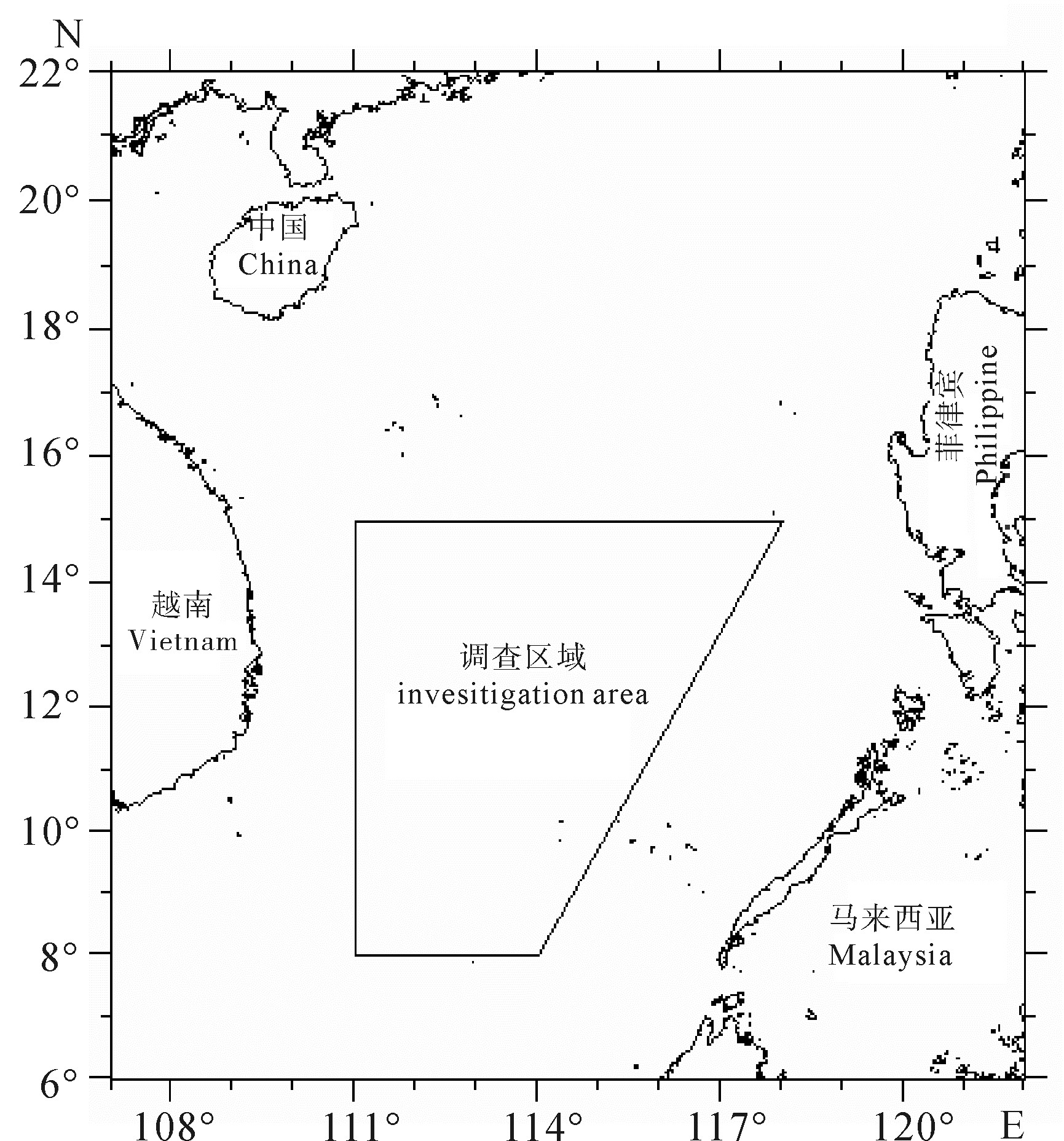
 下载:
下载:
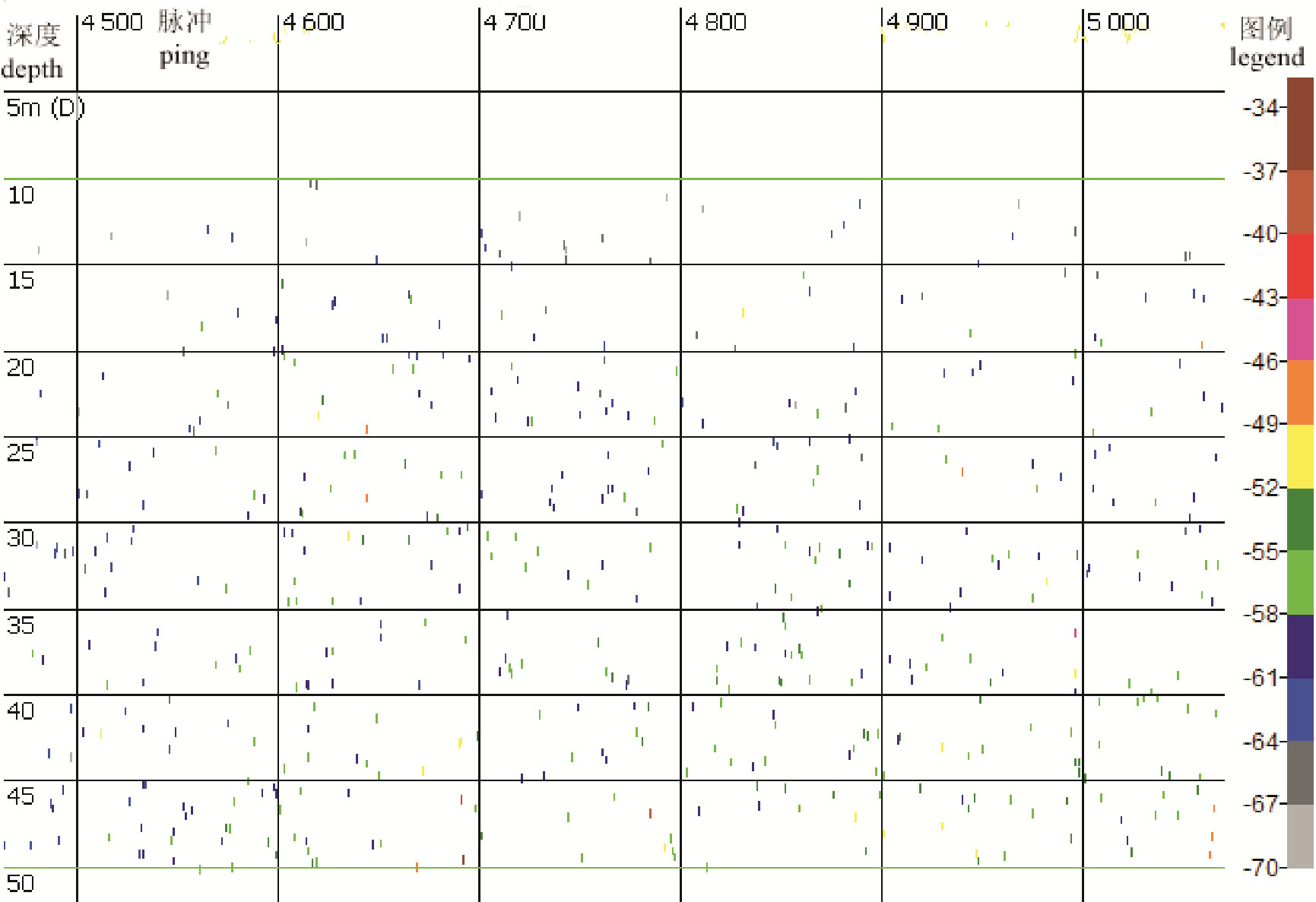
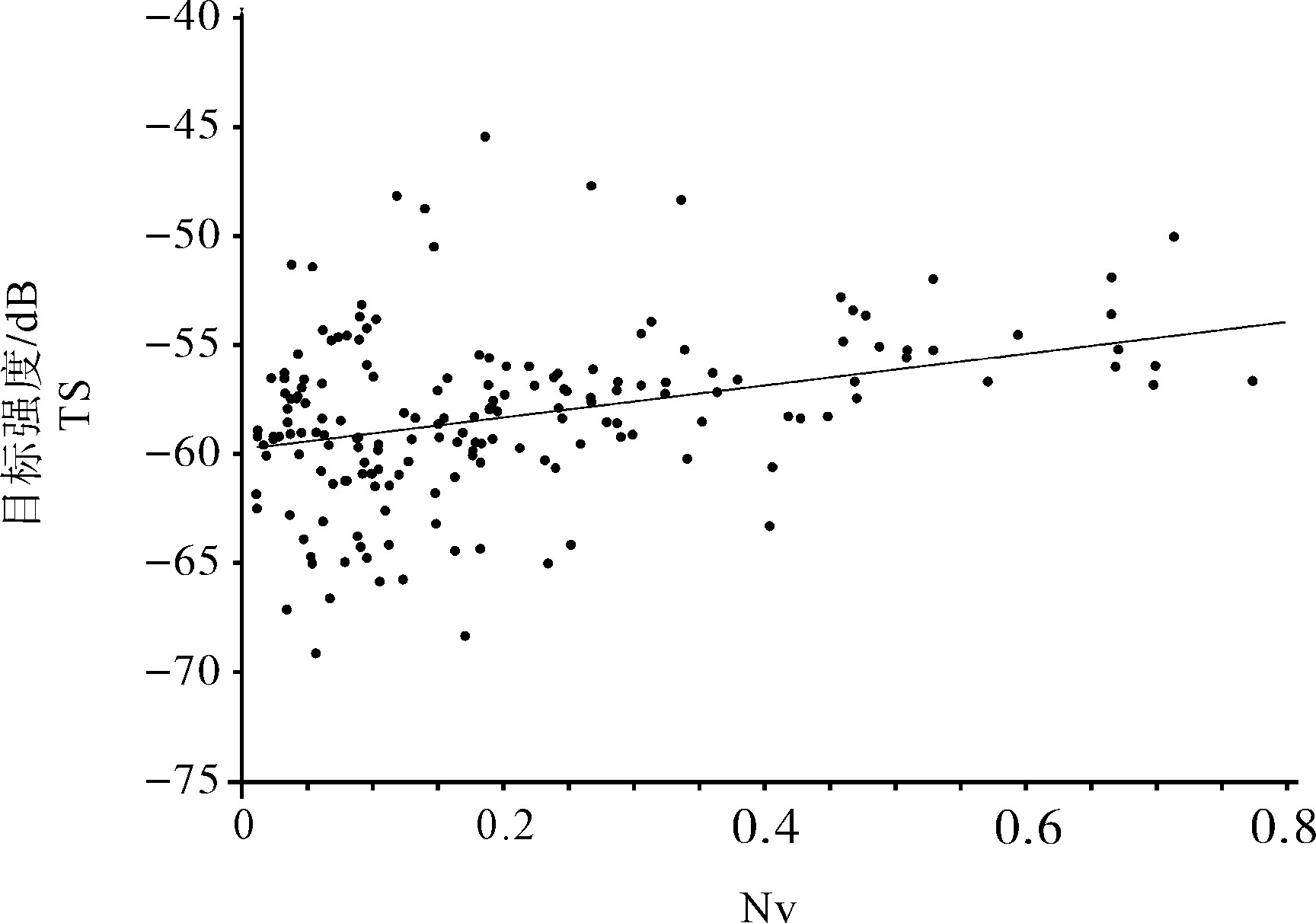
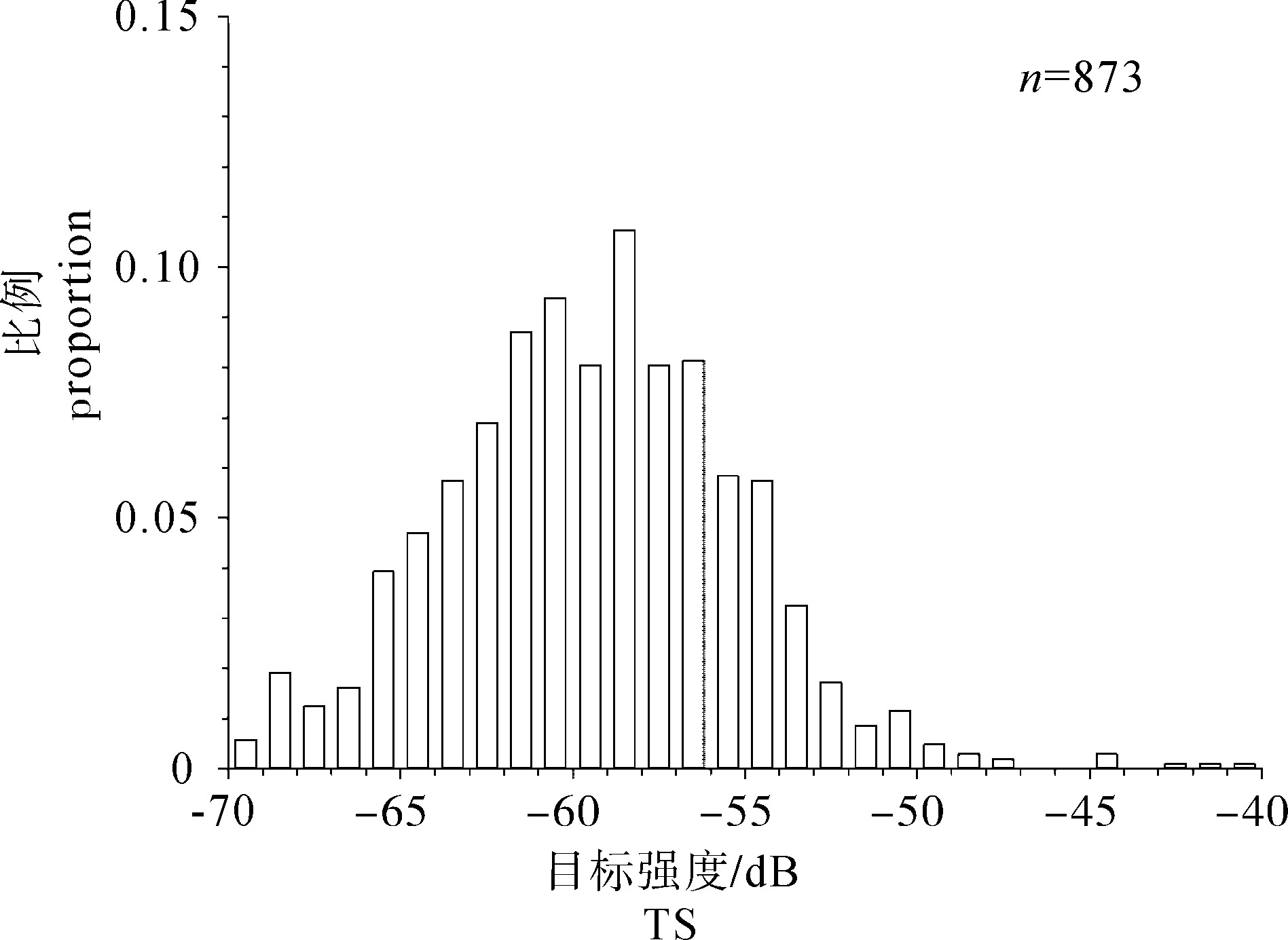
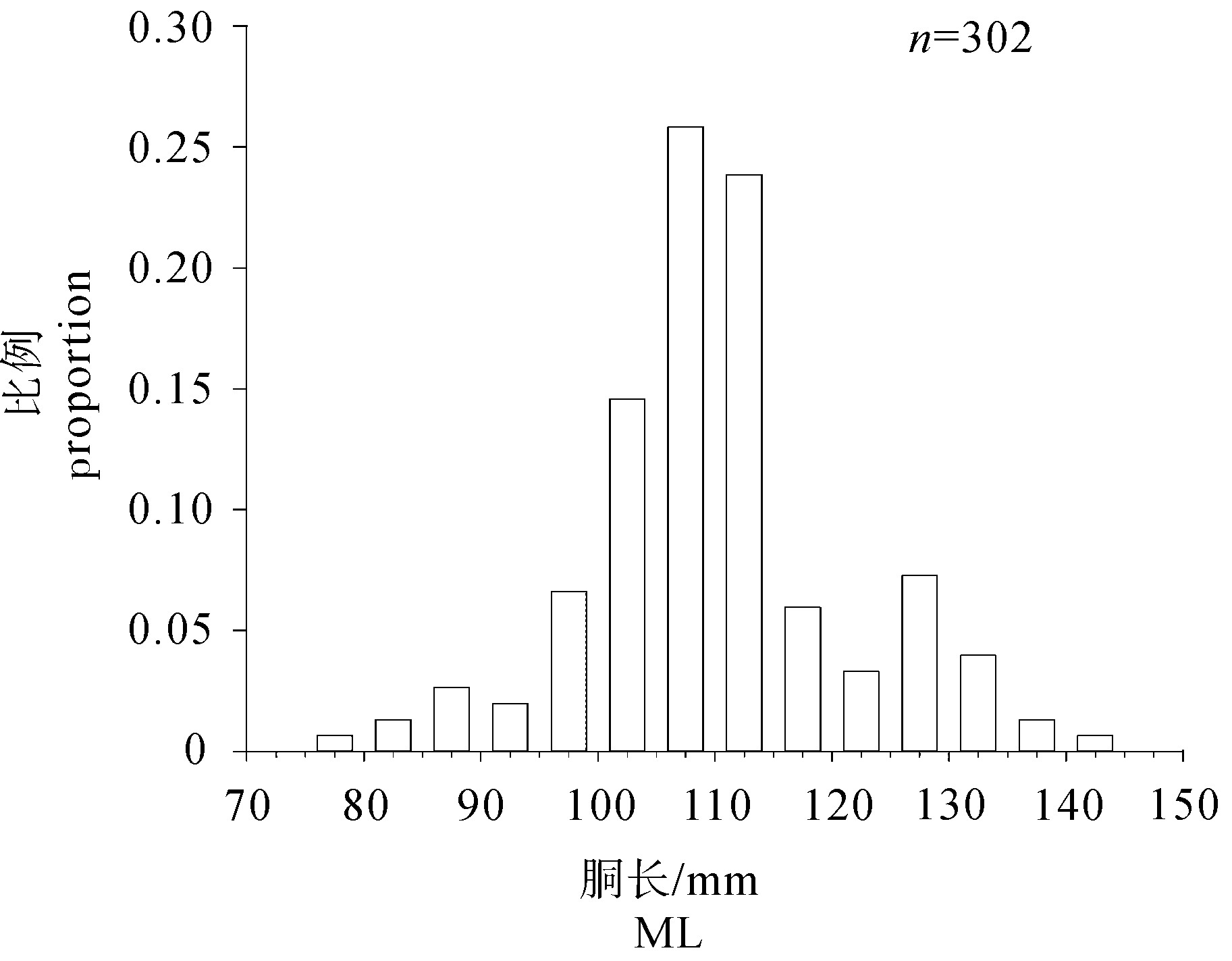
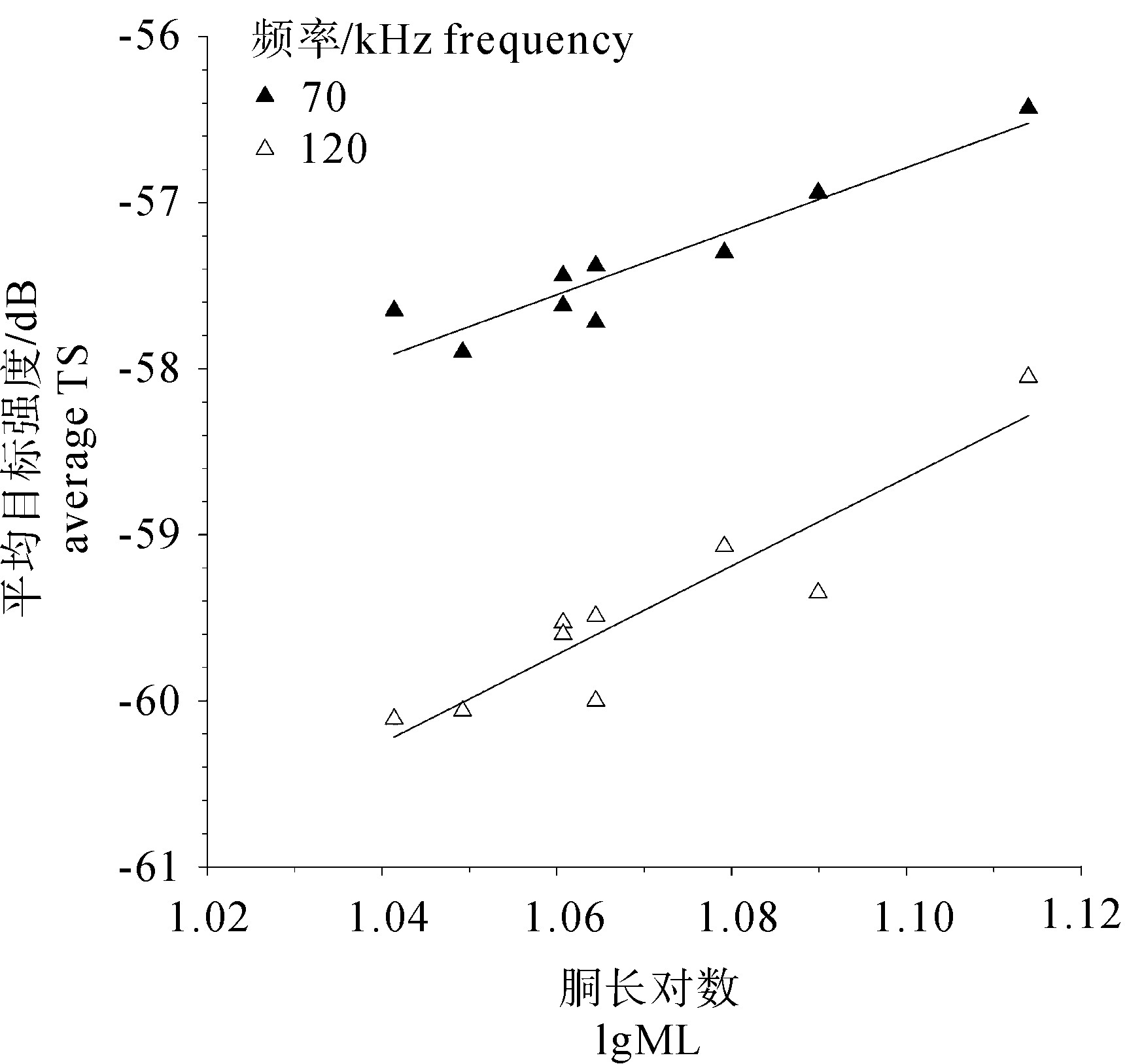
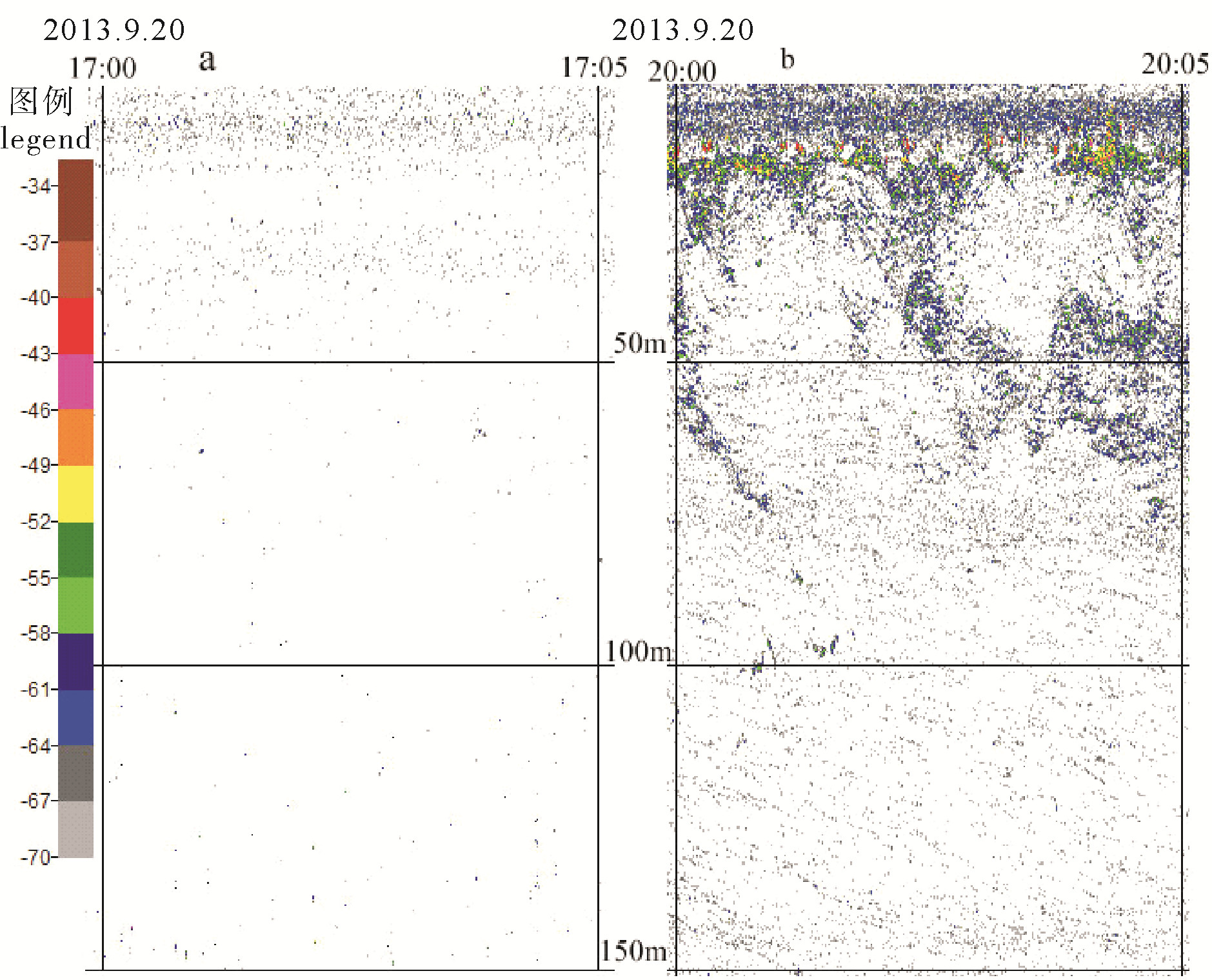
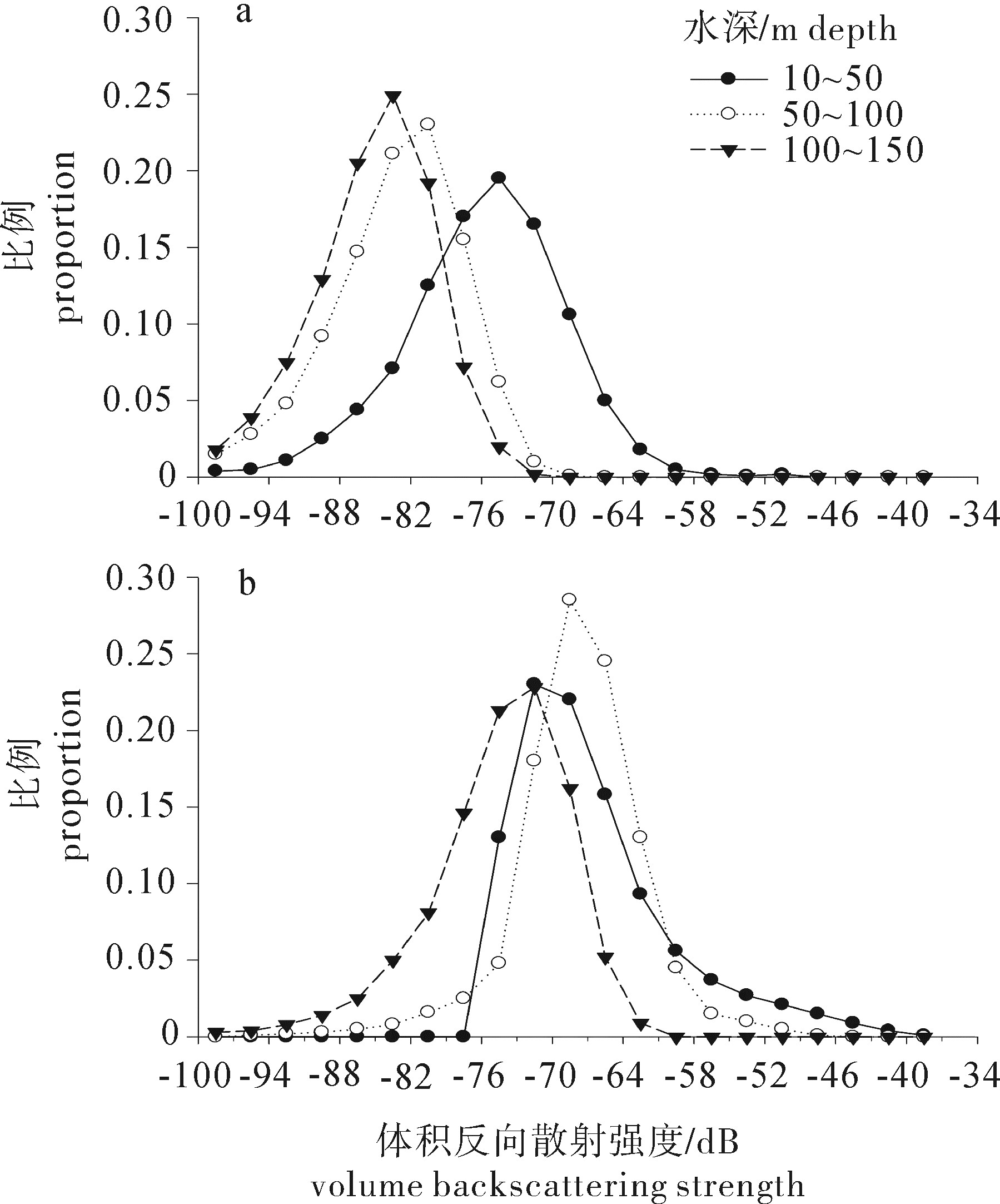
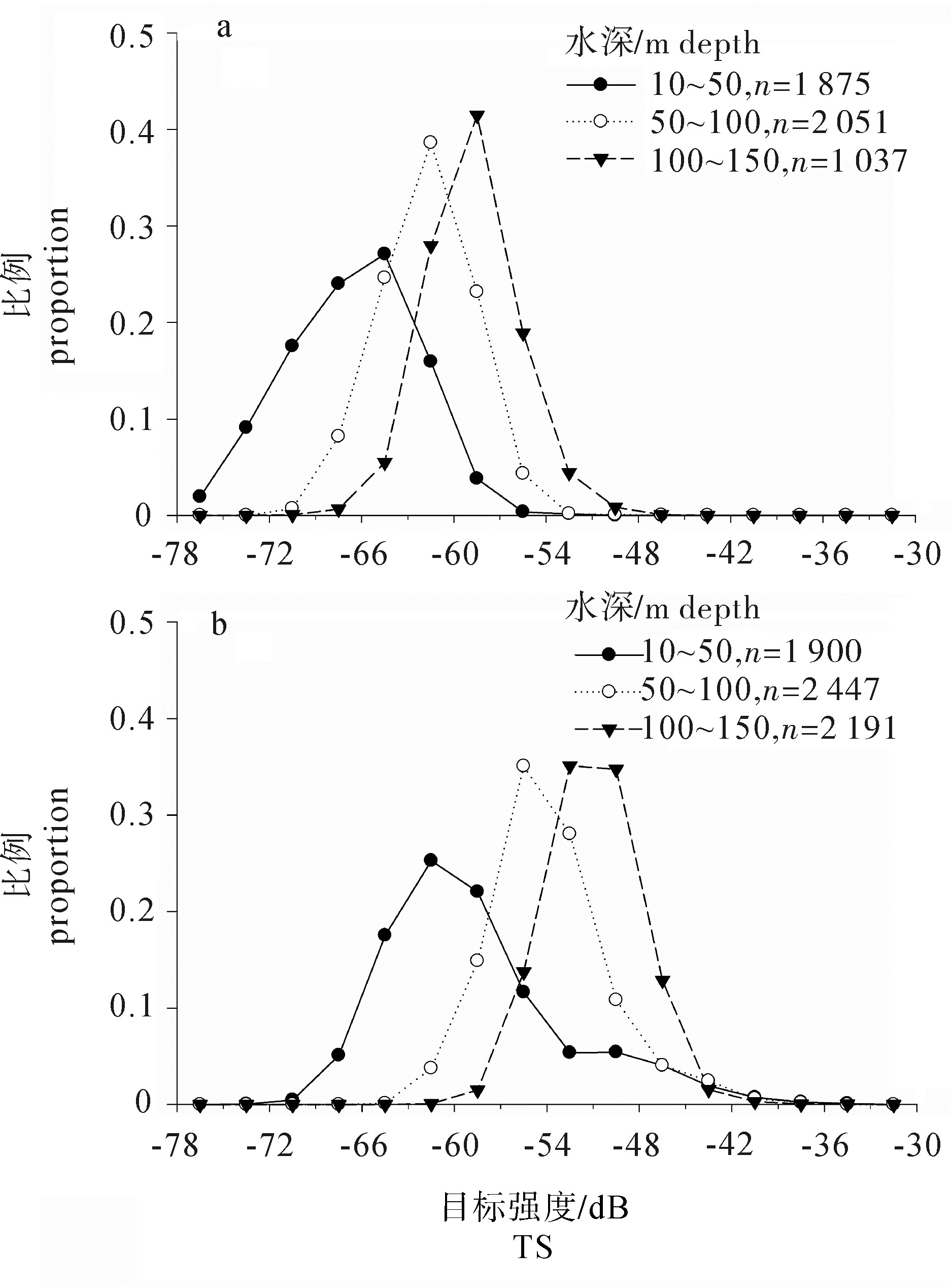
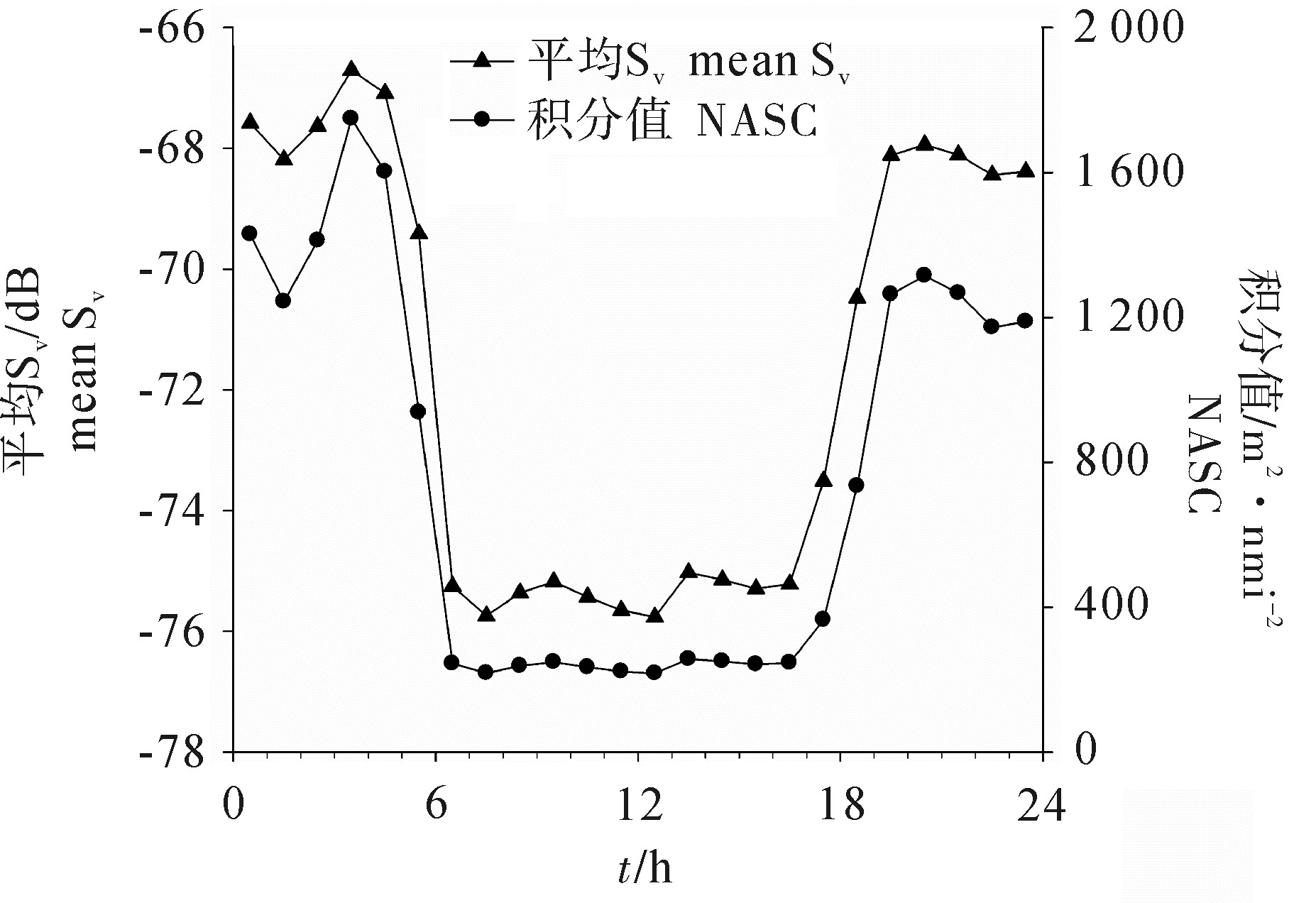
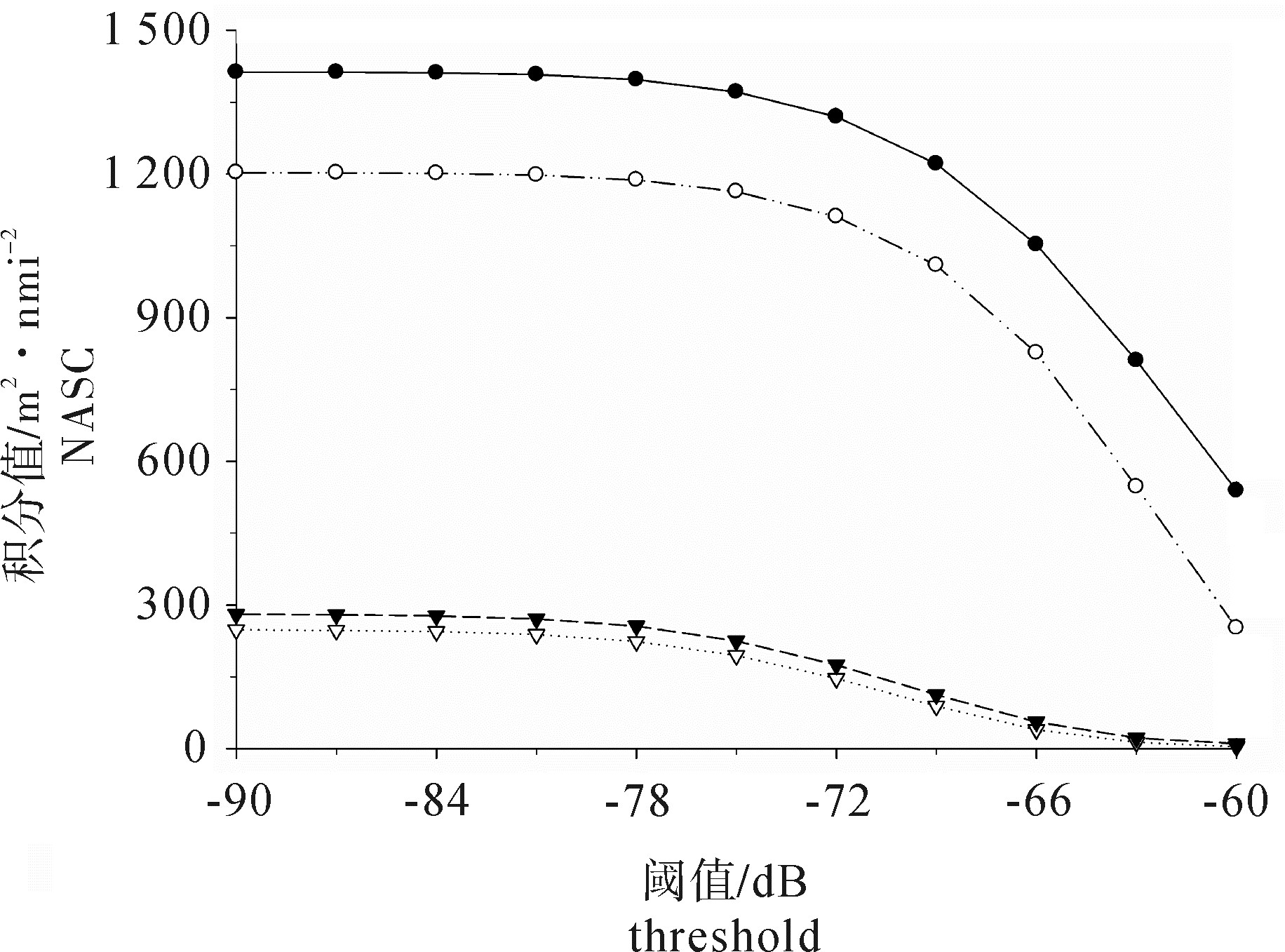
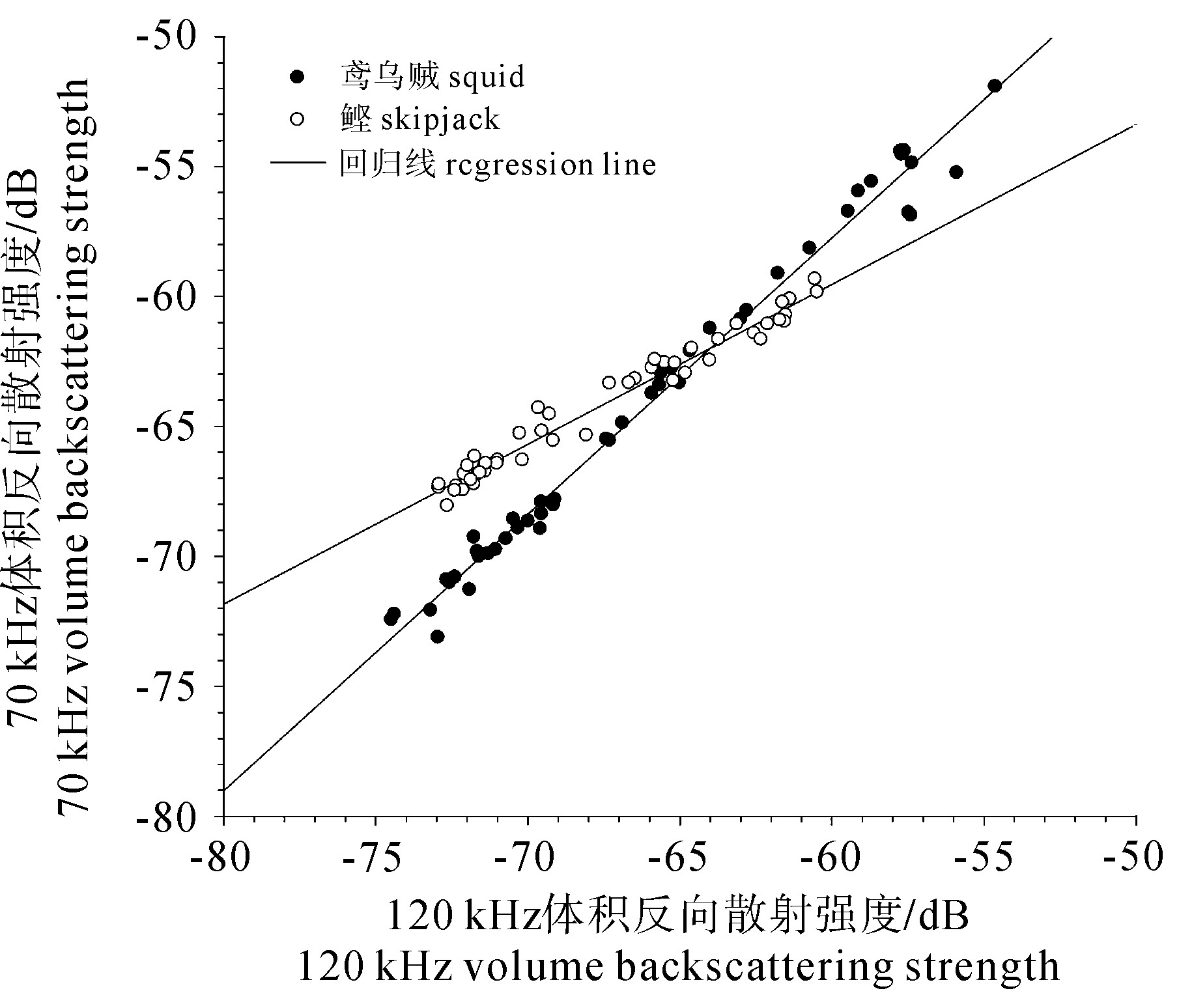
 粤公网安备 44010502001741号
粤公网安备 44010502001741号
